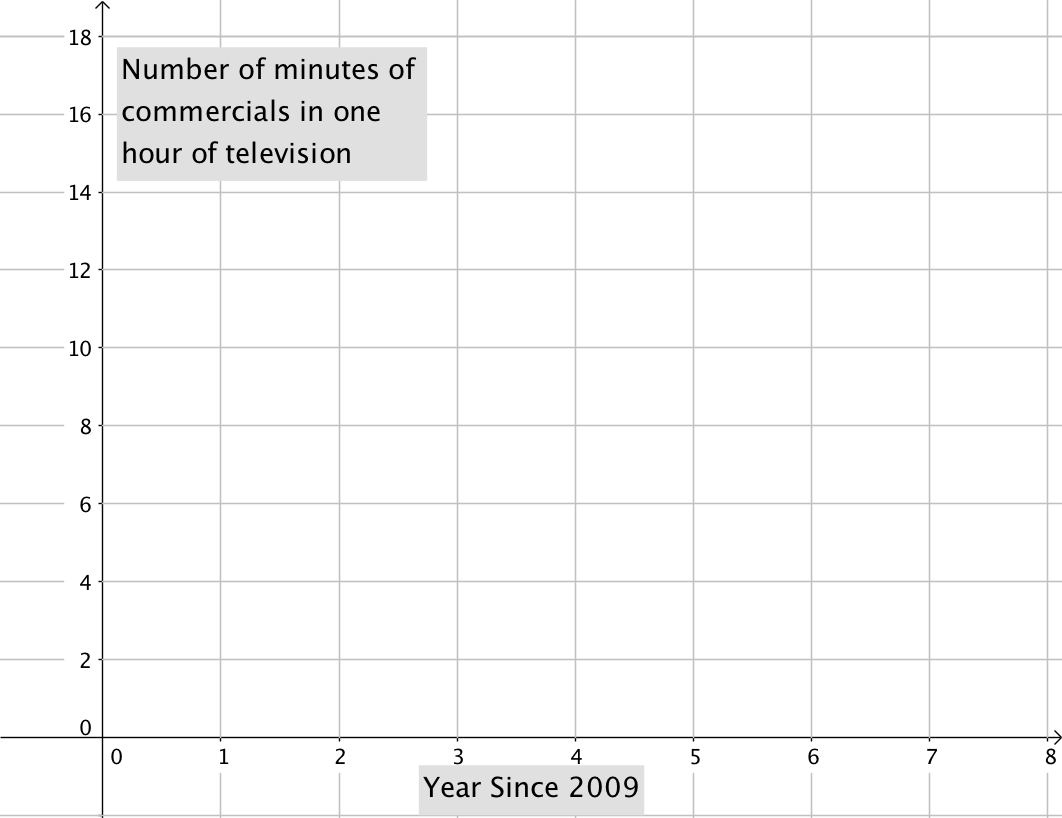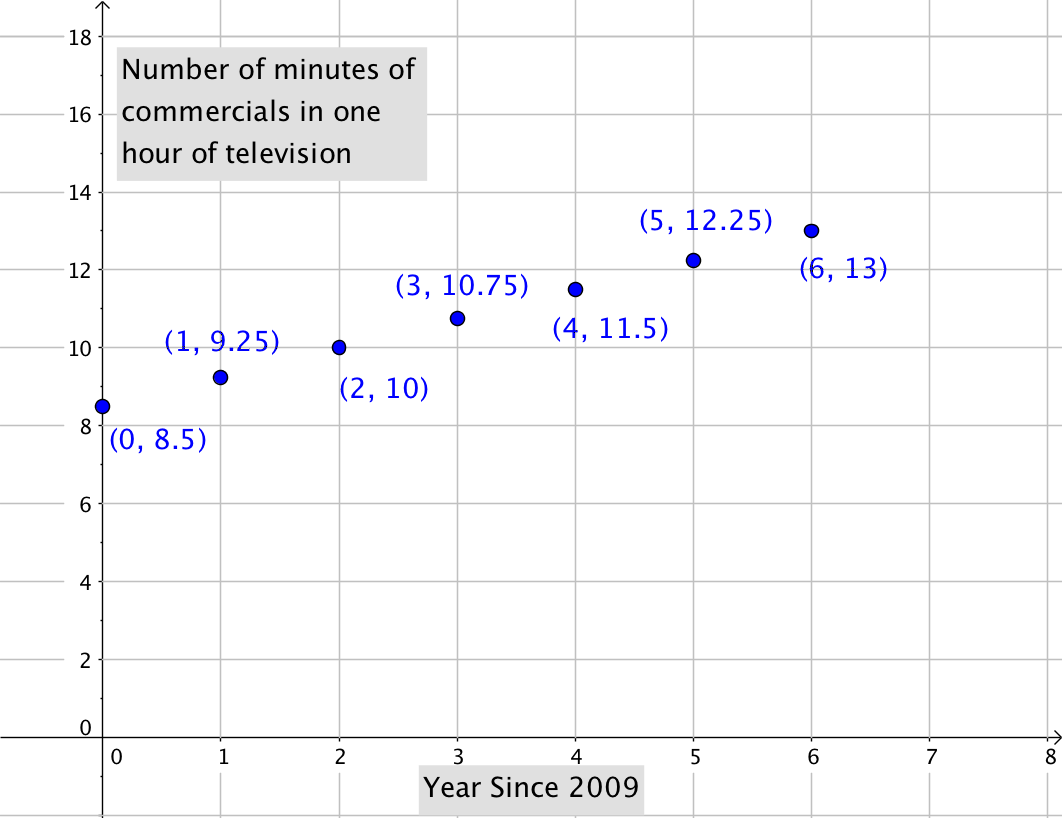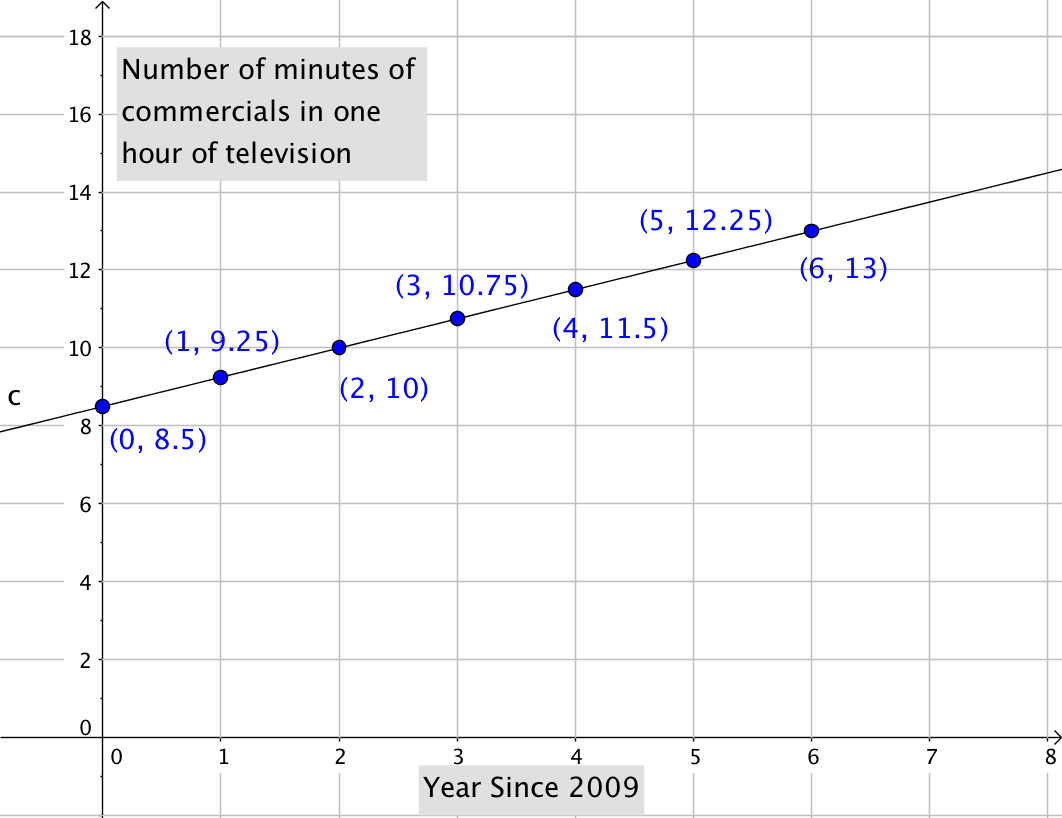Conclusion
Put it Together

Joan's uncle Devon is a semiprofessional blogger who writes about media (he'd really like to be a paid film critic, but no one has offered yet). Recently, Devon posted a short blog piece complaining about the number of ads on TV these days, compared to when he was younger. He wasn't very scientific about it, and a couple of his readers disputed a claim he made and tried to start an argument.
Devon asks Joan, who is taking an algebra class at night, to help him gather and cite some data to support his claim that there are "way more" TV ads now than when he was a kid. Together, they get online and do a little research, and find a website that reports some interesting data on the number of minutes of TV commercials per hour since 2009, shown below:
| Years since 2009 | Minutes |
|---|---|
| 0 | 8.5 |
| 1 | 9.25 |
| 2 | 10 |
| 3 | 10.75 |
| 4 | 11.5 |
| 5 | 12.25 |
| 6 | 13 |
The Cartesian Coordinate Plane
Joan remembers that the coordinate plane gives graphs structure and meaning. A straight line on a page won't tell Devon's readers much. Joan draws the axes and labels the horizontal one "Years Since 2009," because that's the first data point they have. Then Devon labels the vertical axis from 1 to 18 because the minute data ranges from 8.5 to 13 minutes, and that will give room on either side. They plot the ordered pairs from the table of values on the coordinate plane, as below.
They plot the ordered pairs from the table of values on the coordinate plane, as below.
 The points give them a guide for drawing the line, which is shown below.
The points give them a guide for drawing the line, which is shown below.
 Devon is excited to post the graph on his blog to show people how much more time they are being exposed to commercials in one hour of TV watching since 2009.
Then, it happens . . .
One of his readers asks if he can guess how many minutes of commercials will be in one hour of television ten years from now (assuming the current trend continues). After thinking about the question for a while, Joan realizes they don't have to guess! Joan and Devon have all the information they need to write the equation of the line they drew. She tells Devon that he could then put in any value for the years since 2009.
Devon is excited to post the graph on his blog to show people how much more time they are being exposed to commercials in one hour of TV watching since 2009.
Then, it happens . . .
One of his readers asks if he can guess how many minutes of commercials will be in one hour of television ten years from now (assuming the current trend continues). After thinking about the question for a while, Joan realizes they don't have to guess! Joan and Devon have all the information they need to write the equation of the line they drew. She tells Devon that he could then put in any value for the years since 2009.
